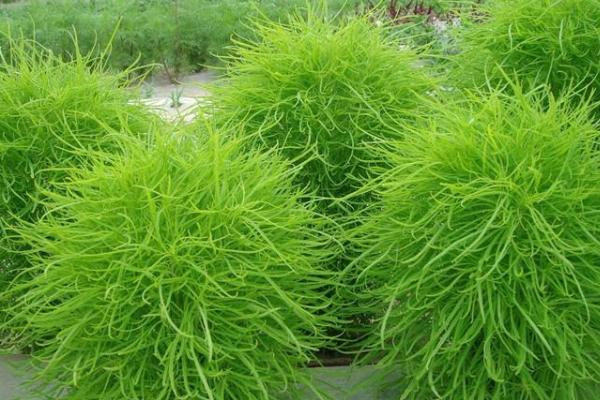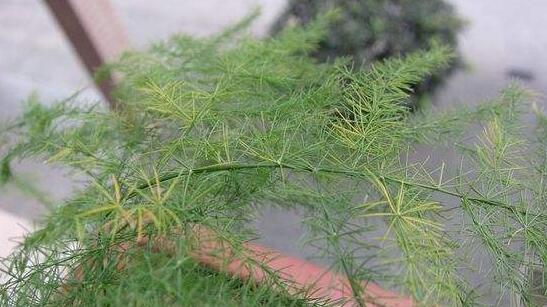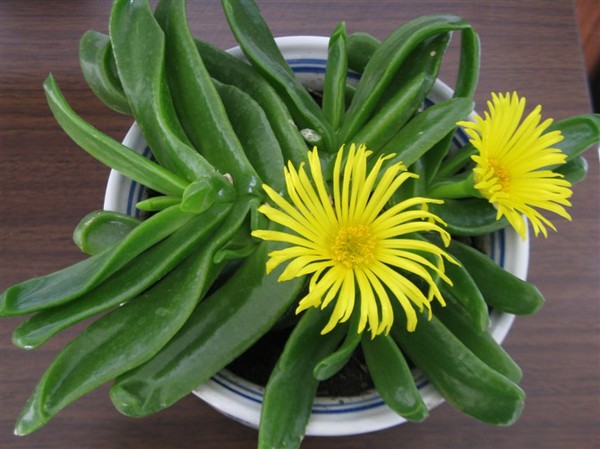How to grow the skin of the earth?
1. Sowing and raising seedlings
Can be direct seeding or seedling transplanting. Direct seeding in the open field can be carried out in early April, and sufficient base fertilizer should be applied before sowing. Hole sowing, strip sowing or withdrawal sowing can be done. The seedlings in the protected field can be sown from the first ten days of March to the middle of March, the diameter of the seeds covered with soil is 3-4 times, and the seedlings emerge after 6-7 days.
two。 Field management
Fixed seedling or transplanting: if direct seeding, seedling height 15 cm 20 cm later, combined with harvesting seedlings, according to plant row spacing 70 × 100 cm seedling. The seedlings cultivated in the nursery bed were planted in the field when the height of the seedlings was 6-10 cm.

How to grow the skin?
1. Fixed seedling transfer: direct seeding naked on the ground when the seedling grows to 15 cm to 20 cm high, it can be combined with the harvested seedlings according to the row spacing of 70 cm to 100 cm, and the seedlings can be transferred and planted when the seedlings grow to 6 cm to 10 cm.
2. Water and fertilizer management: 150 kg / ha of instant bio-organic fertilizer should be irrigated and irrigated every 7 to 10 days during the growing period.
3. Pest control: the ground skin is vulnerable to aphids, which can be controlled by 40% dimethoate EC 1000-1200 times, and it is also easy to be parasitized by dodder, which should be removed in time after discovery.
4. Timely harvest: the seedlings can be harvested when the plant grows to 15-20 cm high, and the stems and leaves can be harvested one after another from April to July, and the whole plant or seeds can be harvested after autumn.
Planting method of ground skin
1. Soil
Skin does not have high requirements for soil, like loose, fertile, humus-containing sandy soil, and good drainage of sandy soil, but can also tolerate barren and thin soil, can also tolerate alkali soil.
2. Light and temperature
The skin likes the sunny environment, but it is also a more shade-tolerant plant.
In terms of temperature, the skin likes to be warm and is not resistant to cold. In addition, the suitable temperature for skin germination is between 10 and 20 ℃.
3. Water and fertilizer management
In the aspect of water and fertilizer management, the maintenance and management of land skin is still very simple and extensive. Basically, when planting, the soil needs to be fertilized with a certain amount of base fertilizer and watered once.
After planting, you need to apply fertilizer 2-3 times a year for the skin, of course, you can no longer apply fertilizer. Watering, although the skin can withstand drought, but still should add a certain amount of moisture, moisturizing the soil, the skin will grow well. Water is required to be watered every 7-10 days during the growing period. The soil is dry and wet to avoid stagnant water.
4. Methods of reproduction
The reproduction of Kochia mandshurica is generally sown and propagated, which is generally carried out in spring and sowed directly. The seeds of Kochia mandshurica are sown in April every year, and before sowing, base fertilizer is applied to keep the soil moist. Seedlings can emerge in about 10 days, and can be planted at the right time. The sowing and propagation of the skin is rapid, neat and easy to maintain.
Matters needing attention of the skin
1. Weeds: in the growth process of the skin, it is inevitable that there will be a lot of weeds, which need to be removed. Weeding can be carried out by means of artificial control, mechanical control, chemical control, alternative control and ecological control.
2. Diseases and insect pests: the ground skin is more vulnerable to aphids and the parasitism of dodder. It needs timely prevention and control.
Insect pests in the skin of the earth and its control
In the process of growth, the skin is not easy to produce diseases, but there are still insect pests. The skin of the ground is vulnerable to aphids. When aphids are found, they can be repelled by manual catching or biological control. In addition, 1000-1200 times 40% dimethoate EC can be used to spray insect repellent, or 500 times 10% imidacloprid wettable powder solution can be used for control.
In addition to aphids, there are also green insects, which mostly occur from the end of June to the middle of August. When it is found that there are green insects, you can get rid of the insect, or you can use insecticides, using 40% dimethoate emulsion 1000-2000 times liquid or 20% Dingkang granule 4000 times solution to control.
To sum up, the skin is not only beautiful and generous, can be used as a potted decoration room, but also has a very high edible value and medicinal value! What are you waiting for? hurry up to add a touch of green to your home and take action!
How to plant and maintain the potted skin? gently touch the skin, there is a faint smell of pine, is a good ornamental plant, can be used to arrange flower hedges, flower borders, or several plants planted in the center of the flower bed, can be trimmed into a variety of geometric shapes for layout. Potted skin can be embellished and decorated in halls, halls, venues, etc. Although it is easy to cultivate, it is not, it is a very difficult plant to serve. Cultivation steps: ① chooses and buys moderate-sized ground skin plants. When ② is transplanted in a new pot, the Internet should be laid in the basin. The ③ soil is mixed with potted soil and sandy soil according to the ratio of 3:1, and put into the flowerpot to 1pm 2. ④ will remove the skin from the original flowerpot, put it into the new flowerpot and fill it with soil. ⑤ watered with a kettle and checked to see if the drain was effective. Key points of conservation: ① skin should be cultivated in places with plenty of light in spring and autumn and in bright places indoors in winter. If the drainage of ② is not smooth, the root of the skin is easy to rot, so it is suitable to soak the flowerpot in water, not suitable for watering from top to bottom. ③ if the color of the skin changes, it is because the light is not enough or the drainage is not smooth, so the discolored leaves should be cut off and replaced with new pots. If it is still not reversed, it may be the discoloration caused by poor ventilation, so it has to be planted in a well-ventilated place. ③ leaves turn brown, even death, can also be used as a potted ornamental, with a special flavor.
- Prev

What if the asparagus leaves turn yellow? learn 8 tricks to get the leaves back to normal.
Under normal circumstances, the leaves of asparagus should be green all the year round, but if you do not pay attention to the breeding methods and precautions of asparagus, it may lead to the phenomenon of leaf yellowing, so how to do the leaves yellowing? We need to know the reason why asparagus leaves turn yellow before we can take corresponding measures.
- Next

The cultivation of Buddha's palm
Buddha palm is a perennial herb, which opens in the sunny afternoon and closes at night, so that the day opens and the night closes for about 7 days. In case of rainy days or insufficient light in the cultivation place, it is difficult to open. It can be illuminated by human light and will open normally. Plants are cross-pollinated. Plants of bergamot are easy to grow in groups.
Related
- Fuxing push coffee new agricultural production and marketing class: lack of small-scale processing plants
- Jujube rice field leisure farm deep ploughing Yilan for five years to create a space for organic food and play
- Nongyu Farm-A trial of organic papaya for brave women with advanced technology
- Four points for attention in the prevention and control of diseases and insect pests of edible fungi
- How to add nutrient solution to Edible Fungi
- Is there any good way to control edible fungus mites?
- Open Inoculation Technology of Edible Fungi
- Is there any clever way to use fertilizer for edible fungus in winter?
- What agents are used to kill the pathogens of edible fungi in the mushroom shed?
- Rapid drying of Edible Fungi

